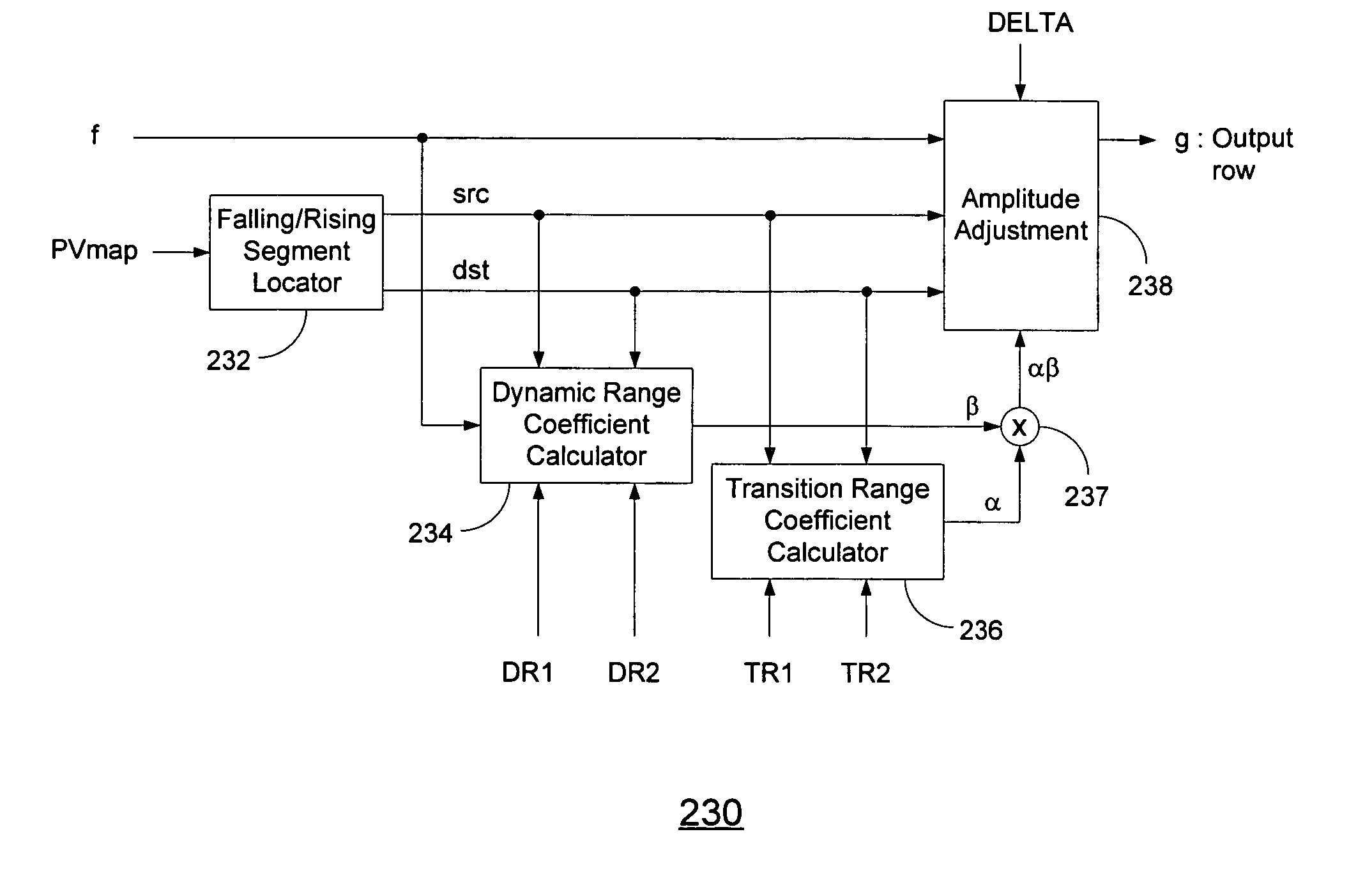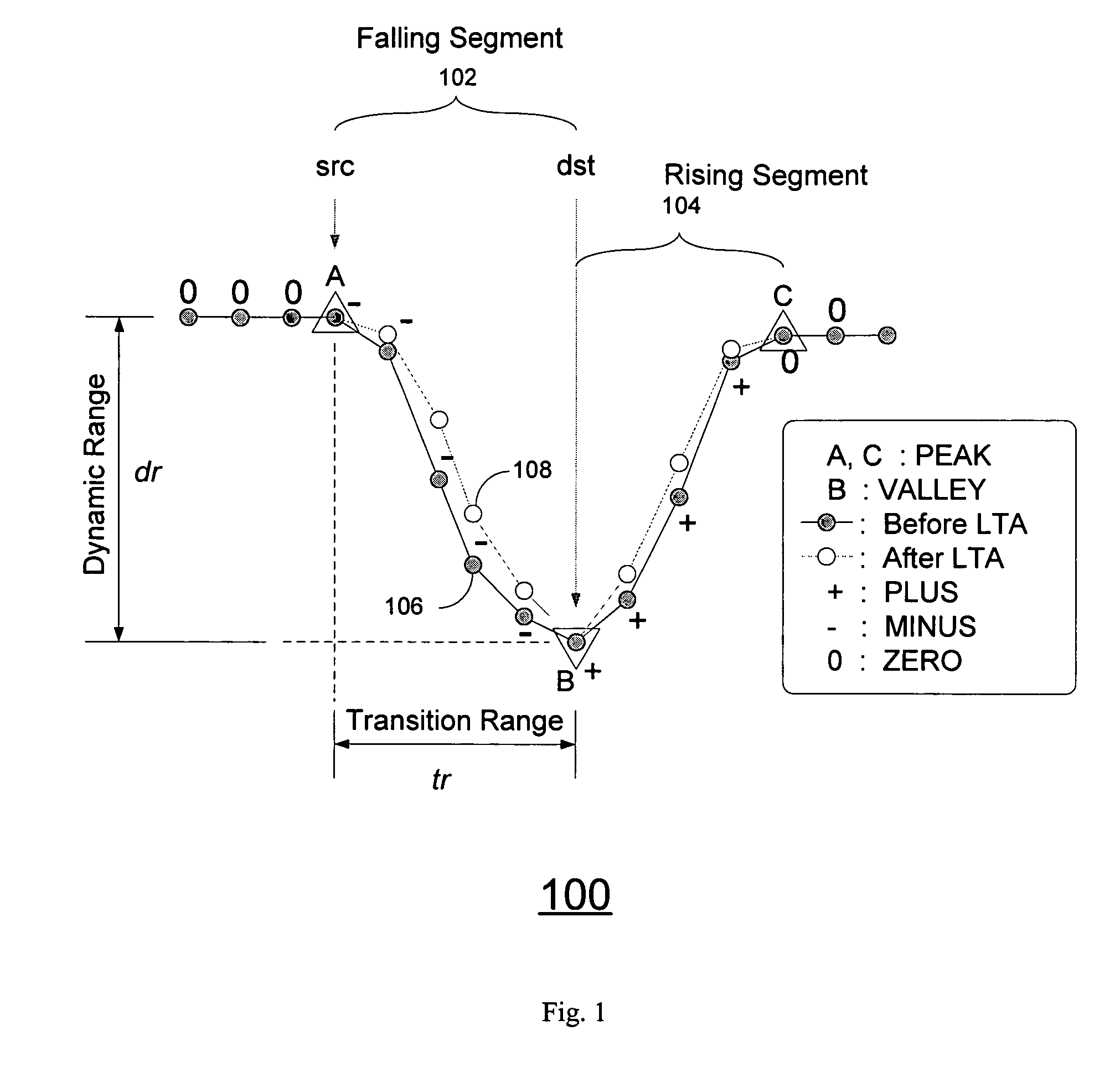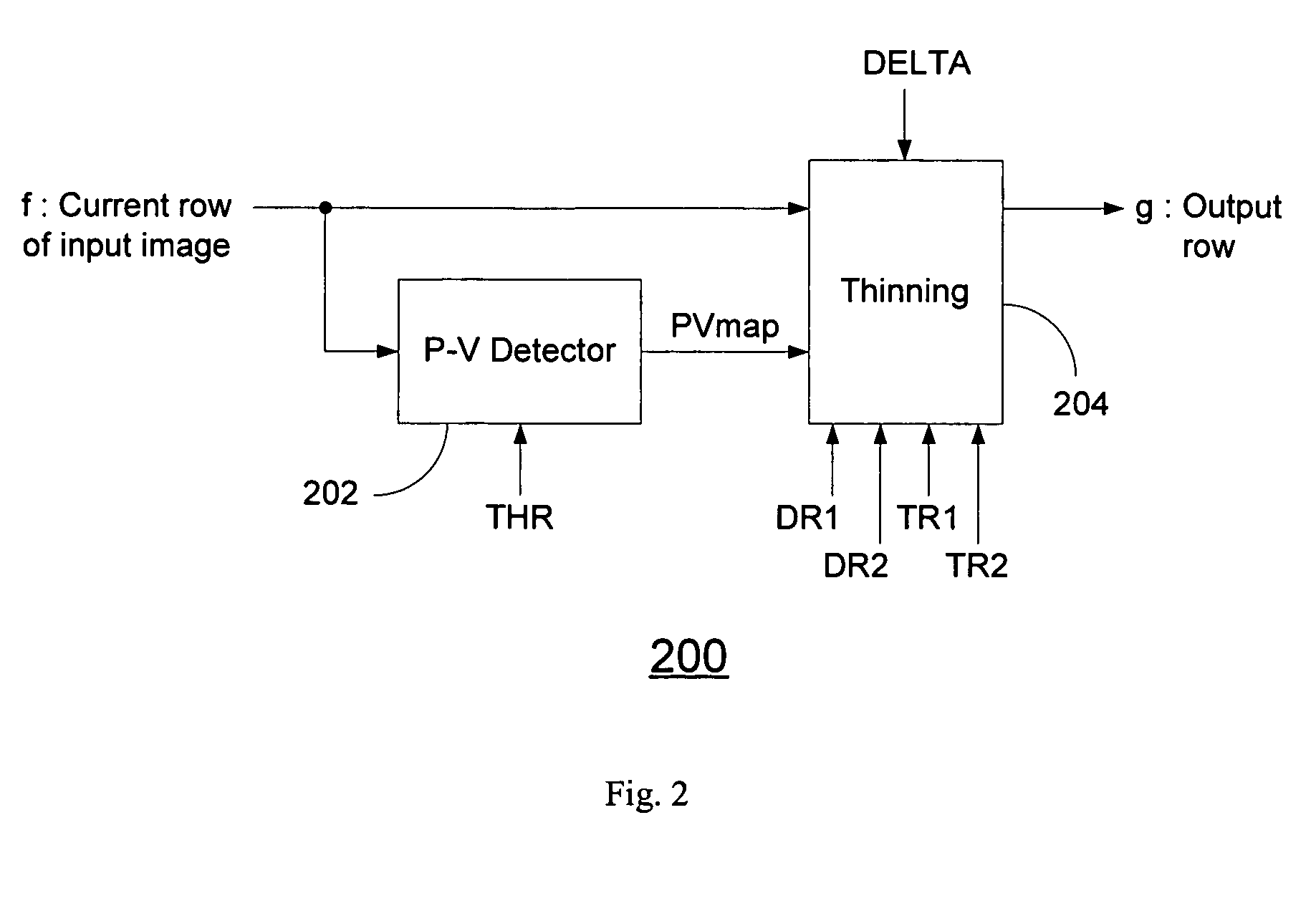Line thinning method and system for grayscale image
a grayscale image and line thinning technology, applied in image enhancement, instruments, computing, etc., can solve the problems of the skeleton of each object or line in the input image, and achieve the effect of robust to nois
- Summary
- Abstract
- Description
- Claims
- Application Information
AI Technical Summary
Benefits of technology
Problems solved by technology
Method used
Image
Examples
Embodiment Construction
[0016] In one embodiment the present invention provides a line thinning algorithm (LTA) method and system for processing grayscale digital images. The LTA method is applied to an input image which is in grayscale format, wherein the LTA method requires only two separable operations along horizontal and vertical directions. The LTA method is a separable algorithm which performs on each row of input grayscale image sequentially from top to bottom and subsequently on each column from left to right, independently. The LTA method is very robust to the noise, and is capable of thinning the lines even though they are in noisy image areas. The level of thinning is fully adaptive to the transition range and dynamic range locally in each line segment in the image. Furthermore, the LTA method for a black line can be easily generalized for a white line counterpart by simply switching the sign of one parameter (DELTA) from positive to negative without changing other parts of LTA. In the present ...
PUM
 Login to View More
Login to View More Abstract
Description
Claims
Application Information
 Login to View More
Login to View More - R&D
- Intellectual Property
- Life Sciences
- Materials
- Tech Scout
- Unparalleled Data Quality
- Higher Quality Content
- 60% Fewer Hallucinations
Browse by: Latest US Patents, China's latest patents, Technical Efficacy Thesaurus, Application Domain, Technology Topic, Popular Technical Reports.
© 2025 PatSnap. All rights reserved.Legal|Privacy policy|Modern Slavery Act Transparency Statement|Sitemap|About US| Contact US: help@patsnap.com



